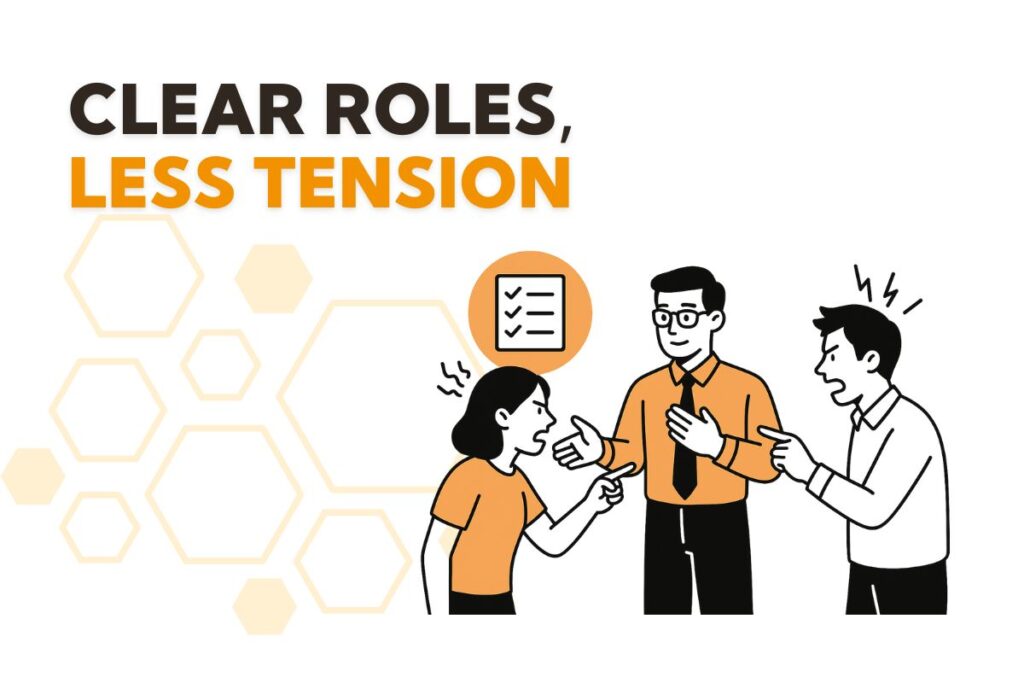Internal conflict can quietly damage your massage clinic from the inside out
Handling disputes among staff members is one of the most uncomfortable but essential parts of running a successful massage therapy clinic. Whether it’s disagreements over shift schedules, shared spaces, or communication breakdowns, unresolved tension between staff can quietly chip away at team morale, disrupt the client experience, and hurt long-term retention.
As a clinic owner, you might feel unsure about how to approach these situations without taking sides or creating more stress. But with a clear strategy and some proactive steps, handling disputes among staff members can become an opportunity to strengthen your team and protect your business from unnecessary turnover.
Spotting the Early Signs of Conflict Before They Spread
Staff tension rarely starts loudly
In most massage clinics, disputes among staff members don’t begin with open arguments. They usually start with subtle changes—less eye contact, last-minute schedule swaps, or passive complaints that don’t get reported. A therapist might start avoiding shared shifts, or you may hear whisperings about “who’s not pulling their weight.”
Often, clinic owners first notice these issues through their impact on operations—missed transitions between clients, awkward room handoffs, or an unexpected dip in team energy. These are all signs that something needs your attention.
A common example with real impact
At one busy practice, a therapist quietly grew resentful over always managing the laundry. Another team member assumed the duty rotated informally. The issue went unspoken until client feedback hinted at a rushed, tense atmosphere. By the time the owner stepped in, both staff members were frustrated and disengaged.
Why Disputes Arise: Core Causes That Affect Massage Clinics
Undefined roles create daily friction
When there’s no clarity about responsibilities, handling disputes among staff members becomes a regular concern. A therapist might assume another team member should handle the towels or close down a room. If expectations aren’t documented, each person operates based on assumptions—and misalignment follows.
Competition for shared resources
Massage therapists rely on shared treatment rooms, equipment, and prime booking times. When these are limited and schedules feel uneven, staff may begin to feel like they’re competing rather than collaborating. That sense of unfairness breeds quiet frustration.
Communication mismatches and unspoken expectations
Some therapists are comfortable being direct, while others prefer a more collaborative or emotional communication style. When these preferences clash, misunderstandings can easily become personal. Without a process to address concerns openly, the result is often silence followed by resentment.

Resolution Starts with the Right Approach
There isn’t one fix-all for handling disputes among staff members. Depending on the situation, different strategies will be more effective. For minor, low-stakes friction, you may choose to observe and check in later. For more active disagreements, mediation may be necessary.
Some owners use a mix of five proven approaches: avoiding (for temporary, low-impact issues), accommodating (to de-escalate and maintain peace), competing (when safety or boundaries are non-negotiable), compromising (for fast but fair outcomes), and collaborating (for longer-term, values-based solutions). Being flexible and thoughtful about which approach to use matters as much as acting quickly.
Building the Right Space for Honest Dialogue
Handling disputes among staff members effectively starts with communication, but not just any communication. You need a neutral space and a structured conversation. Begin by privately meeting with each person to hear their side. Then bring both together in a respectful, focused discussion.
These conversations should have simple ground rules: no interrupting, focus on facts not personalities, and a shared goal of moving forward. As the clinic owner, it’s your job to guide the conversation and redirect if things veer into blame. Your tone sets the tone.
Creating a culture where people feel safe to speak up
Staff are far more likely to raise concerns early when they know they won’t be punished for doing so. Regular, scheduled check-ins help make feedback feel normal. So does responding consistently to small issues before they become larger problems.
Preventing Conflict Through Structure and Culture
Clear expectations prevent unnecessary friction
One of the most effective ways to reduce the need for handling disputes among staff members is to remove the ambiguity that causes them. Written procedures for closing routines, room turnover, laundry responsibilities, and client handoffs eliminate the guesswork. These procedures should be visible, easy to reference, and part of your onboarding.
Using tools like Hivemanager’s team management and task tracking features allows you to set, share, and reinforce expectations consistently. This ensures staff know their roles and responsibilities from day one.
Regular team meetings and communication practices
Clinic-wide meetings don’t need to be long or formal. Even a 15-minute weekly or biweekly team huddle can be enough to share updates, check in on room flow, and surface small concerns before they grow. You can also use simple team communication tools, such as internal notes or alerts in your Hivemanager dashboard, to keep everyone aligned.

How Clinic Owners Can Lead Through Conflict
Remaining neutral without avoiding responsibility
As a clinic owner, you don’t have to be a therapist to your staff—but you do need to lead. That means stepping in early, guiding discussions professionally, and making decisions that prioritize fairness and team wellbeing. Documenting any formal conversations helps protect everyone, including you.
Bringing in outside help when needed
Sometimes disputes are rooted in personal issues, past patterns, or deep miscommunication. If a resolution feels beyond your reach, hiring an outside HR consultant or mediator can help de-escalate things while signaling that you take the matter seriously.
Turning Conflict Into Positive Change
Handling disputes among staff members isn’t just about resolving tension—it’s about using conflict as a signal. Most disagreements are a sign of unmet needs, unclear systems, or missed opportunities for communication. When approached with care and consistency, resolving these issues often results in stronger policies, better understanding among staff, and a more resilient clinic culture.
Conflict handled well becomes a growth moment. For the individuals involved, it builds communication skills. For your clinic, it creates a more transparent, healthy work environment. And for your clients, it ensures a consistent, high-quality experience rooted in a team that works well together—even when things get difficult.
FAQs
Start with a private check-in. Ask open-ended questions, listen without judgment, and look for patterns. This allows you to understand the issue before taking further action.
Small issues often become big ones when ignored. Addressing them early—respectfully and with clarity—shows leadership and protects team culture.
Yes. Using Hivemanager’s scheduling, task tracking, and internal communication tools helps clarify responsibilities, reduce overlaps, and document processes that prevent misunderstandings.
If a team member repeatedly avoids resolution, it may require a formal performance discussion. Outline expectations clearly, and if needed, bring in a neutral third party to support the process.



